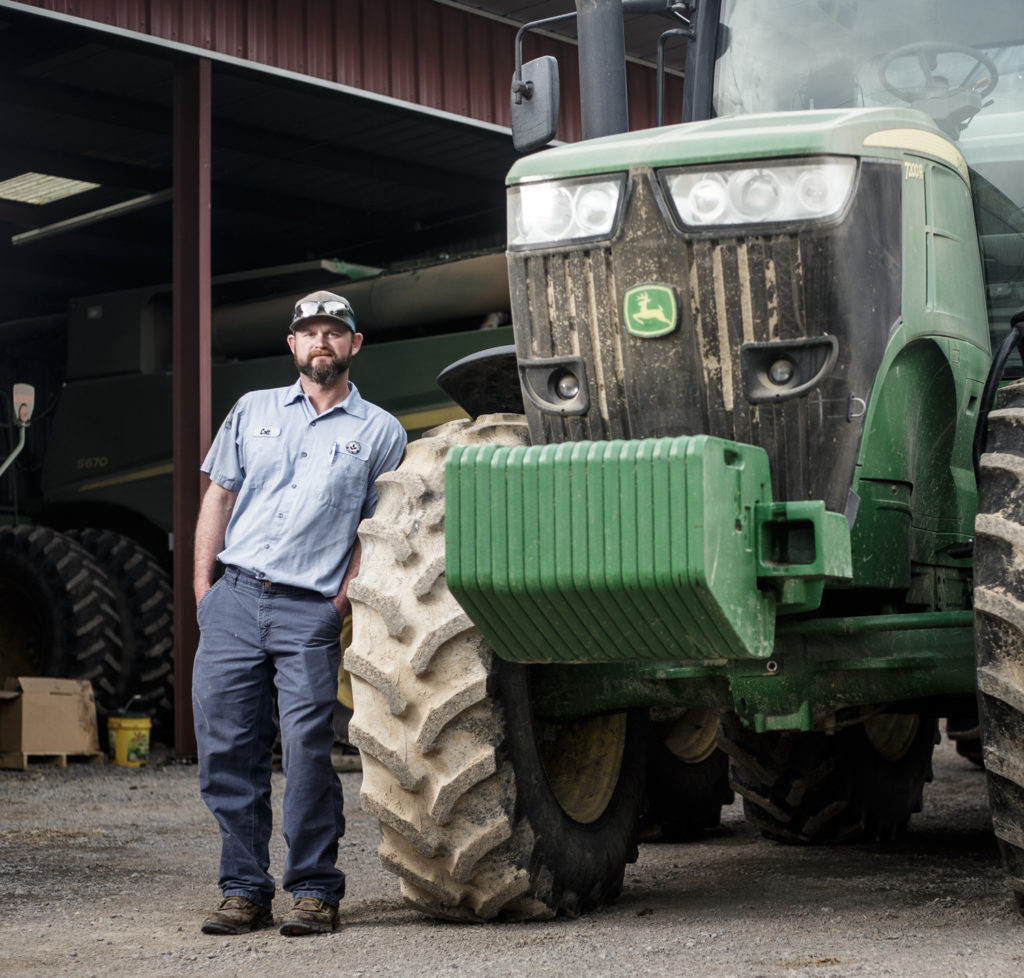Supply Chain, Weather Issues Hamper Harvest

By Mary Sell, Alabama Daily News
Weather delays — a cool spring and wet fall — and supply chain issues, especially on equipment parts, slowed harvest across the state last year.
In a normal year, Talladega County farmer Bob Luker would have finished harvesting his cotton by the last day of November. In 2021, he was just getting started on his 800 acres.
The national supply chain and inflation issues are hitting home in Alabama. Instead of being able to order parts for quick delivery, farmers are having to wait weeks or spend valuable time traveling to get a needed piece.
“The thing about it isn’t the drive or the expense, it’s the time lost,” Luker said during a phone interview from the cab of his cotton picker. “We only have so many pretty days. You can’t pick cotton in the rain, you can’t pick cotton when it’s wet, you can’t pick it in the mud. And you only have so many days to get this crop out, and each day you sit waiting on parts or hunting parts is a day of harvest you lose.”
That same sunny day, Colt Clemmons was harvesting his neighbor’s soybeans in Lauderdale County. Clemmons finished with his own beans a few weeks before, but parts issues delayed his neighbor.
“The everyday stuff you carry with you to the field, the stuff that could break on a daily basis — blades on the combine header, bolts — you’re having a hard time getting your hands on that now when you need it,” Clemmons said.
Carla Hornady, an Alabama Farmers Federation commodity director, said across the state, there was still a lot of cotton in fields into December.
She said she’s heard of farmers driving to Indiana to get needed parts.
“They just can’t depend on shipping to get their parts here,” she said.
And during harvest, time is not a farmer’s friend.
“Once the crop is ready, the longer it sits in the field, the more quality loss they will have when they actually harvest that crop,” Hornady said.
That means it’s worth less when it can be sold. Cotton prices are good, meaning farmers missed out if they had to sell a weathered crop.
Limited truck and driver availability also affected cotton, said Joey Scarborough, manager of Milstead Farm Group cotton gin in Shorter.
“When there’s a harvest going on, it requires a vast, vast capacity (of trucks) in a very timely manner,” Scarborough said. “…that’s probably where we’re seeing the largest lack of capacity right now.”
In early December, Scarborough said the gin was behind schedule. The later it gets, the dicier the weather.
“Every time it rains now, it’s harder for it to dry up,” he said.
Trucks aren’t the only transportation issue for growers, Scarborough said. The cotton seeds that are separated from the lint also have value and a market.
“It’s taken to Atlanta, loaded on rail and taken to the West Coast and fed to cattle,” Scarborough said. “But freight containers aren’t available right now, and it’s made it incredibly expensive. That comes out of the value of the cotton seed for the producer.”
Rising Costs, Planning Ahead
Dr. Wendiam Sawadgo, an Auburn University assistant professor of agricultural economics, said producers spent more on harvesting and likely will on planting in the spring, too. Fuel costs were up 32% in late 2021 compared to October 2020, and machinery costs were up about 14%.
And costs are expected to stay high, including for fertilizer and chemicals. The U.S. imports most of its fertilizer, and there’s a global shortage. Meanwhile, crop prices are higher, meaning farmers want to plant more.
“So, combining the low supply with the high demand has shot fertilizer prices up quite a bit,” Sawadgo said.
Sawadgo said farmers will have to be even more diligent about planning in 2022 so as not to use more fertilizer, fuel or other inputs than necessary.
Clemmons, who farms about 3,000 acres per year, has always fertilized his empty fields in the spring, prior to planting. In response to rising costs, he fertilized this past fall.
“If we can save $100 or $200 a ton by spreading it early, that’s $100 or $200 that we can save for the spring,” he said.
Saving $100 a ton equates to thousands of dollars.
There are still unknowns, including spring seed and fuel prices.
“I’ve never had to look so far ahead to stay ahead,” he said.
Luker said that as he was picking cotton, he was thinking about 2022 prices and availability.
“There is uncertainty,” he said. “It’s always been, ‘How much will it cost?’ Now it’s, ‘Can we even get it?’”
From his tractor, Luker made clear he is not “all doom and gloom.” He was grateful to be farming on a beautiful day. In 2020, he was hospitalized for four days with COVID-19.
“Times like we’ve had, they make you appreciate things, whether it’s being able to buy a ton of fertilizer or going to a football game,” Luker said. “There’s always been challenges in farming, these are just some new ones.”
